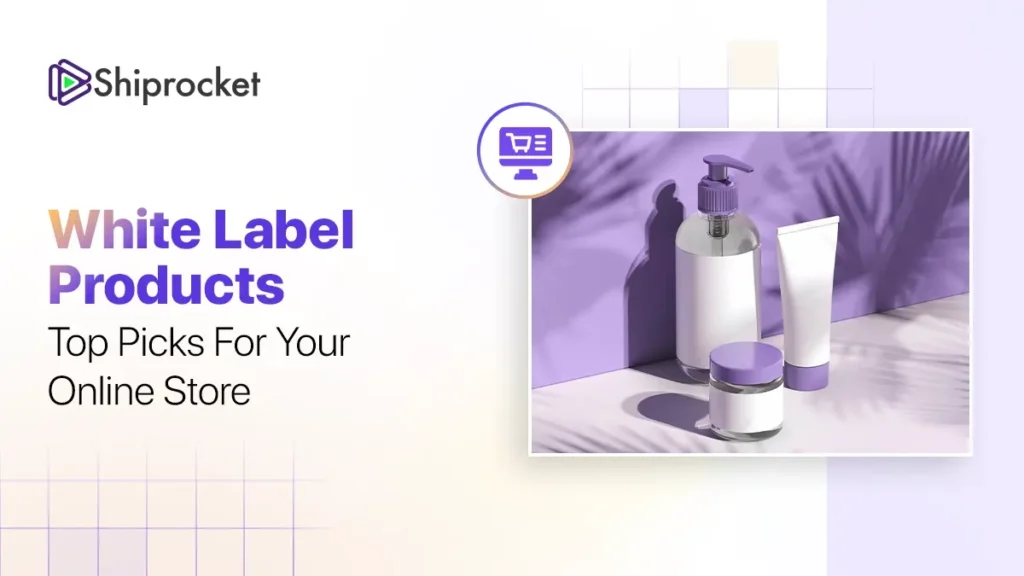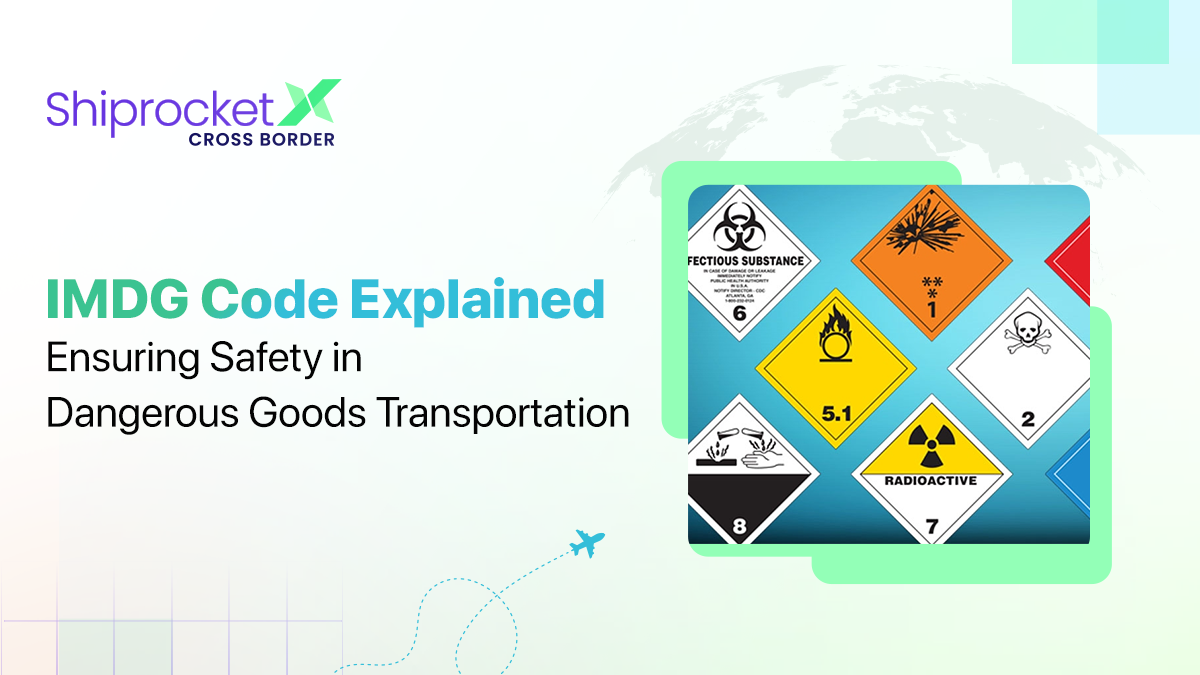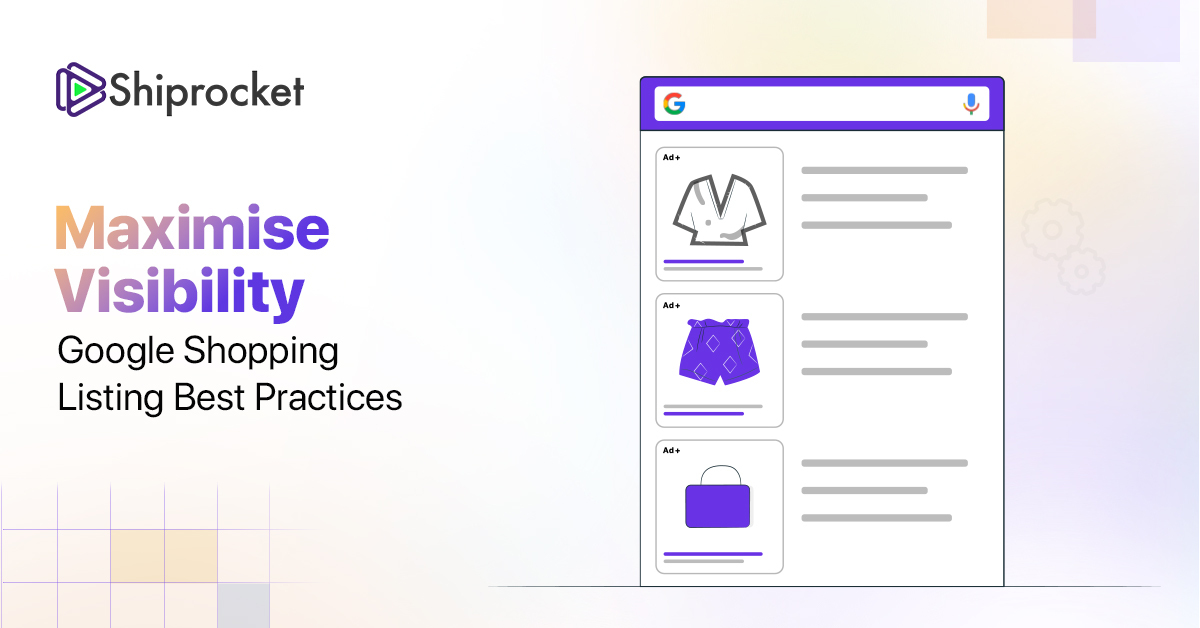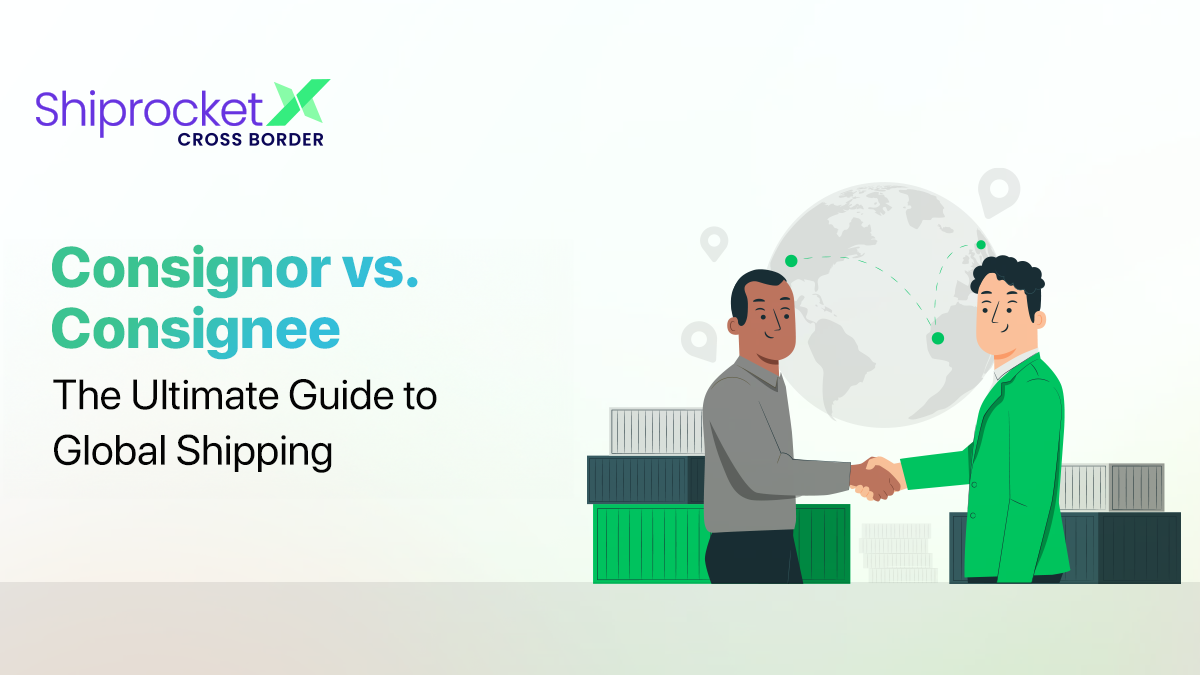White Label Products for Your Online Store in 2025
- What is Meant by White Label Products?
- White Label and Private Label: Know the Difference
- What are the Advantages and Disadvantages of White Labelling?
- Tips to Find White Label Products That Will Sell Like Hot Cakes and Generate Profit
- Features of an Ideal White Label Product
- 10 White Label Products for Your Online Store
- Conclusion
Can one start a brand without manufacturing its products? Is it possible to make it big? The business landscape is evolving and it is important to stand out from the competition. White labelling allows you to establish your brand without actually manufacturing your products. It is an effective strategy that helps to lower the production cost of businesses.
You can try this business model and make great profits by customising your design and branding with the products manufactured by a third party.
This blog will explore what white label products are, their pros and cons, and effective tips to find these products. We will also list the top ten most profitable white label products for your eCommerce business.

What is Meant by White Label Products?
When a product is created by a manufacturer and is sold by another company after adding its brand name and logo, it is known as white labelling. The manufacturer accepts the branding request by the purchaser, or marketer and puts their logo instead of its own.
Although white label products may differ in terms of branding, packaging, logos, and even prices, their fundamental architecture remains the same. Only limited product customisation options, such as adding a brand logo or design on a product’s exterior, are available from white label manufacturers.
White label manufacturers work with several different brands to sell their products. They don’t have to worry about the logistics, storage space, and equipment involved in selling the product.
Here is an example:
Rihanna introduced the cosmetics line, Fenty Beauty. The business has signed an agreement with Kendo Holdings to produce cosmetics for the brand. The same manufacturer also supplies makeup to brands like Marc Jacobs, Bite Beauty, Lip Lab, Kat Von D, and others.
White Label and Private Label: Know the Difference
The table below highlights the key differences between private label and white label products.
| White label | Private label |
|---|---|
| Purchasing an unbranded product from a producer who frequently distributes it to other resellers also is known as white labelling. | In private labelling, an exclusive contract is signed by a seller with a manufacturer to develop the product following the seller’s specifications. The seller then distributes and sells the product under its brand. |
| White label manufacturers are not exclusive to a seller. | Private label manufacturers are exclusive to a seller. |
| There is little scope for product customisation. | The customisation options are abundant and the buyer can choose or influence product features. |
| These products are purchased by the reseller in bulk. They sell these products to customers piece by piece. | The reselling company purchases them at wholesale rates and adds their markup. |
What are the Advantages and Disadvantages of White Labelling?
Advantages of white labelling include:
- Reduced costs: White labelling allows you to create a brand without actually manufacturing your products. It also reduces your equipment costs, inventory costs, salaries, and other expenses.
- Quality assurance: The assurance of the best quality and expertise of other brands, manufacturers, and companies can be leveraged to ensure that they are offering only the best to their customers.
- Flexibility: White-label brands can easily adapt their products to the changing and dynamic trends and consumer needs with minimal customisation.
- Better profit margins: White label products require almost zero investments upfront and risks are quite minimal. The competitive prices in the market leave more room for gains.
- Quick processes: Products can be quickly released when they are white label products. This is because they are not associated with the manufacturing processes, enabling them to expand their portfolio rather quickly.
- Branding opportunities: Expanding their reach and target can be easy as they can easily brand different products under their label.
Major drawbacks of white labelling:
- Lack of control: As white-label manufacturers try to fulfill all the orders they receive, sellers cannot control quality, pricing, stock, and consumer support. They must believe and trust their manufacturers entirely.
- Lack of branding: Room for branding is quite limited in white label products. They have very few options and hence the recognition of a brand can take longer time.
- Immense competition: Differentiating between competitors can be extremely challenging with white labelling. As several brands use the same manufacturers and print-on-demand companies, the competition is extreme.
- Legal mishaps: Brands must keep a close eye on infringement, copyright, and licensing. The consequences can be dire in case they misuse any intellectual property.
Tips to Find White Label Products That Will Sell Like Hot Cakes and Generate Profit
Here are a bunch of tips to help you find profit generating white label products:
- Choose your target audience: Before looking at white label products, you must know who you want to sell to. By understanding who your customers are, you can easily choose what you need to sell and how you must sell it to them.
- Reach out to suppliers: Once you know what you want to sell and who you want to sell to, you must begin networking. You should reach out to different suppliers and see if their products align with your goals and needs. Quality, pricing, customer service, and logistics are key considerations when choosing a supplier.
- Product testing: Test the products before ordering them in bulk. Order a small quantity and check to see how they sell and see if your customers like them. Adapt and pivot as needed post the feedback.
- Branding: Customise your branding after you have chosen your white-label products. Package design, product name, and logs are what create the identity of your brand. These help you build recognition.
Features of an Ideal White Label Product
Here is a list of features that every white label product must have:
- Scalability: Scalability and versatility are crucial features of any white label product. Any white label product should not need increased internal resources while upscaling.
- Customisability: Any white label product should not be something rigid. They must be completely customisable. This will help you increase your offerings and you can easily adapt your product to meet the demand as the trends change. White label products are those that sell extensively when a new trend comes along, and hence the products must be customisable to meet and adapt to dynamic and changing trends.
- Branding opportunities: A white-label product should ideally have immense scope because it will help create your brand. Branding opportunities must be such that even when you choose to collaborate or cross-sell, they should be able to maintain the identity of your brand and complement your collaborations.
- Quality assurance: White label products must be of good quality so that you can leverage quality assurance to market your brand. Reliability and quality are two aspects to consider while sourcing your products from the manufacturers.
10 White Label Products for Your Online Store
White label products can be added to your existing offerings or even products that are helping you launch your new business. For every one of these categories, there are several white label products you can sell. Here are the top ten white label products for your online store:
Essential oils:
These have been around for several decades. Essential oils have the ‘essence’ of a plant. It can either be the plant’s aroma or flavour. The global demand for essential oils is expected to significantly increase between 2018 and 2025, going from anywhere around 226.9 kilotons to 404.2 kilotons.
Today, they are extremely popular and are the primary item used in wellness and self-care; two continuously growing and profitable areas. Diffusers, oils, bed and bath products, etc., can be made with essential oils and can be sold online as white-label products. Wellness influencers can monetise through their brand by selling essential oils.
Skincare and cosmetics:
What most people do not understand is that cosmetics are made by a handful of manufacturers and producers. In most cases, they even have the same formula. The packing, labelling, and branding of these products are what sets them apart. The colours and gimmicks offered with the products determine their success. The aesthetics chosen for designing the package influences the buyers.
For instance, Katrina Kaif’s brand Kay Beauty is produced by Nykaa, which is a private company that is also responsible for its brand of products. If you are starting an online business, it is advisable to start with a few or just one product and then expand. The global cosmetics market has grown exponentially since 2004. Even though the cosmetics and beauty industry faced a small setback during the pandemic, it is expected to generate revenues amounting to almost 129 billion US dollars by 2028.
Phone accessories:
Accessories for mobile phones and other devices are almost a mandate for a majority of people. The global mobile phone accessories market was valued at around 278 billion USD in 2020. The market is expected to reach an estimated value of 413.2 billion USD by 2030.
White label phone accessories and protection items are not expensive to produce on a large scale. They are widely available and can be customised easily. Phone cases and earphones are a brilliant option for designers and artists to showcase their creativity. Chords, mounts, smartwatch straps, etc., can also be easily rebranded and sold at competitive prices.
Pet accessories:
To combat loneliness, a lot of people decide to adopt pets. With many companies shifting to a remote working style, the working class has chosen this path to avoid being alone. In 2020, the same time as the pandemic, pet ownership rates in the US peaked at 70 per cent. Pet accessories are now in high demand, more than ever before. Among all categories of pet and animal supplies, food and treats are the most profitable categories.
You can choose white label dog beds, cat toys, pet collars, aquariums, and other such accessories. You can even slowly expand to offer pet services like grooming, pet spa, pet daycare, and more.
Coffee:
Coffee consumption in India amounted to more than one million bags, each weighing 60 kilograms, marking a significant increase from the previous year. When considered globally, coffee consumption was over 167 million 60-kilogram bags for the same period. Do you even need more reason to start selling coffee in your online store? However, it’s not as easy as it sounds. It will require a sizable investment. Plus, don’t forget the legal requirements. But there are several inexpensive alternatives available, which will give you a good start and a steady passive income. You can also branch out to sell coffee-based products once your brand is established.
Clothes and accessories:
Clothes, shoes, bracelets, chains, rings, wallets, t-shirts, etc., can easily be turned into white label products. In case you run a fashion brand and are looking to sell your products at a higher price or even collaborate with other brands, you can consider adding your logo to the products. With the help of print-on-demand companies, you will be able to easily make a profit from such businesses.
The revenue of the global apparel market reached a value of 1.53 trillion USD in 2022. This market is expected to grow by over 25% by 2027. Similarly, the clothing and accessories market is expected to grow at a CAGR of 2.79% between 2024 and 2028.
Collagen supplements:
In 2024, the market size of collagen supplements has an estimated value of 5.94 billion USD. This value is expected to reach 8.59 billion USD by 2029, growing at a CAGR of 7.66% from 2024 to 2029.
Collagen is a protein that is associated with making people look youthful. It is present naturally in the body. Hence, many white label brands are making great profits by selling collagen-based products in the market. There are endless possibilities when selling collagen-based products within the industry. Serums, sticks, tea, etc. are some commonly sold collagen products.
Fairy lights and LED lights:
Aesthetics are important in current times where people indulge on social media. Some even believe that calming aesthetics can help one relax. Fairy lights, solar plant lights, LED lights, camp lights, flashlights, etc., can be seen as an offering amongst all white-label sellers. The global LED lighting market size was valued at 81.48 billion USD in 2023. It is expected to grow at a CAGR of 11% from 2023 to 2030. Similarly, the global string or fairy light market size is expected to reach 4433.71 million USD by 2031, growing at a CAGR of 14.8%.
There are several brands in the market and a majority of them source fairy lights and LED lights from the same manufacturers. These products only vary slightly and you must invest in setting up your brand well to stand apart from your competitors.
Fitness apparel and accessories:
Athletic and fitness apparel have become extremely popular and largely in demand after the COVID-19 pandemic. The total revenue of the health and fitness market is expected to grow at a CAGR of 9.61% from 2022 to 2027. Eventually, it will result in an estimated market volume of 6.73 billion USD by 2027. Exercise mats, socks, track pants, leggings, and equipment are now some of the most commonly sold white-label products. They are available through several manufacturers and companies that print on demand. Online boutiques, clothing lines, and fitness influencers can help you make big money through their brands.
Tote bags:
Sustainable practices are on the rise now. In recent years, consumer trends have shifted and people today are largely accepting of green practices. Retailers can add branded totes into their offerings and sell them at lower prices to encourage their customers to get rid of plastic bags. The market size of tote bags is expected to grow by 8.93 billion USD at a CAGR of 6.95% from 2022 to 2027. Who would have thought tote bags would become so popular when they were first launched decades ago?
Tote bags can also help them increase their awareness of their brand. It is essentially free marketing. It also works well for designers and artists. It will give them a blank canvas to unleash their creativity. These bags can be made by print-on-demand companies and the business can be started with a low investment.
Conclusion
White label products are extremely popular. They are products that are largely in demand when a new trend arises. It is a way of selling products without manufacturing them. The idea behind white labelling is to rebrand and build a brand without hefty investments. There are several benefits of white label products and it can be extremely lucrative. Any white label product must be scalable, versatile, and customisable. White label companies can be set up with almost no initial investment. They allow you to create your own identity without a lot of hassle. The success of a white label brand depends on how well you keep track of the market and the needs of your target audiences.





